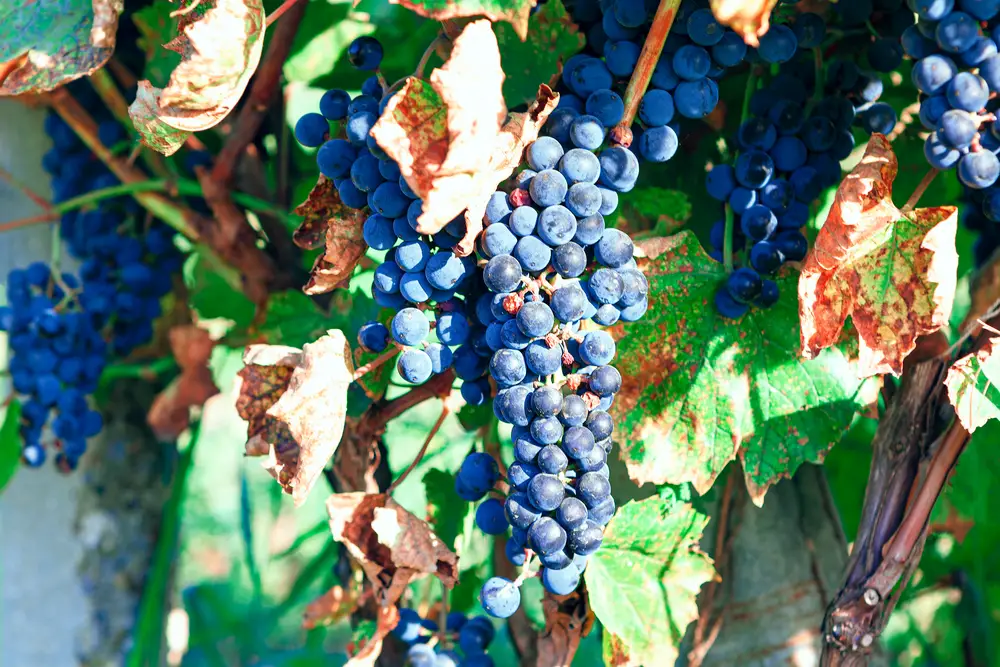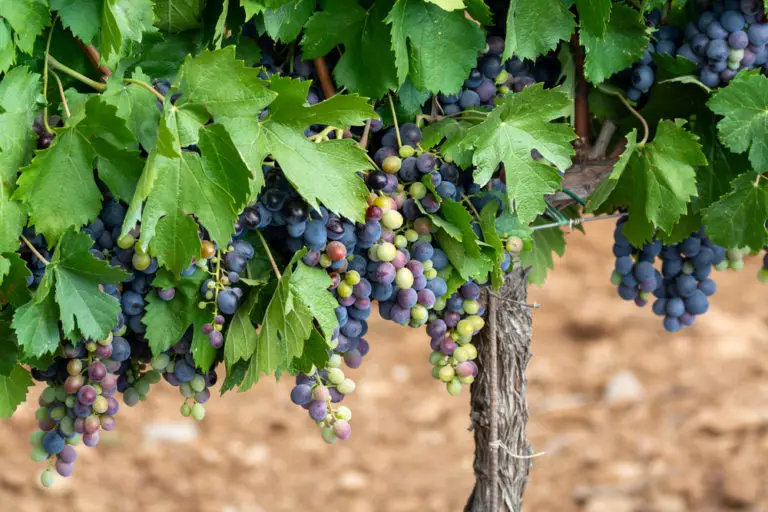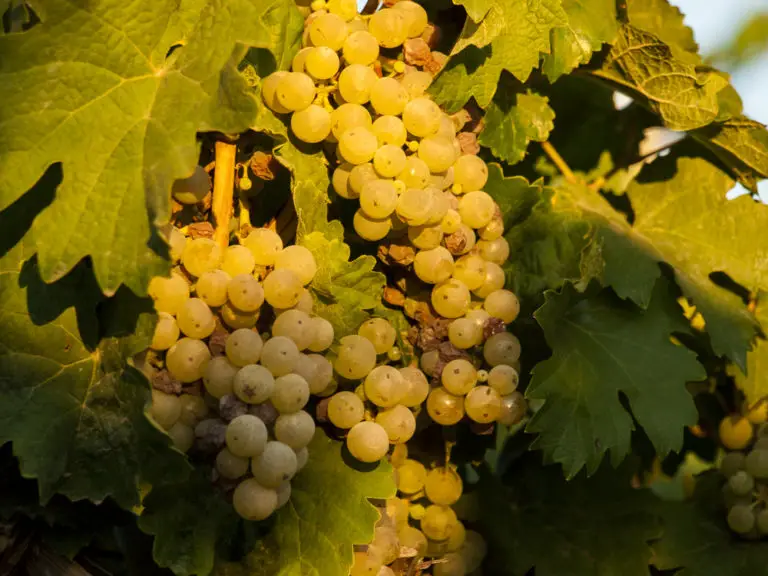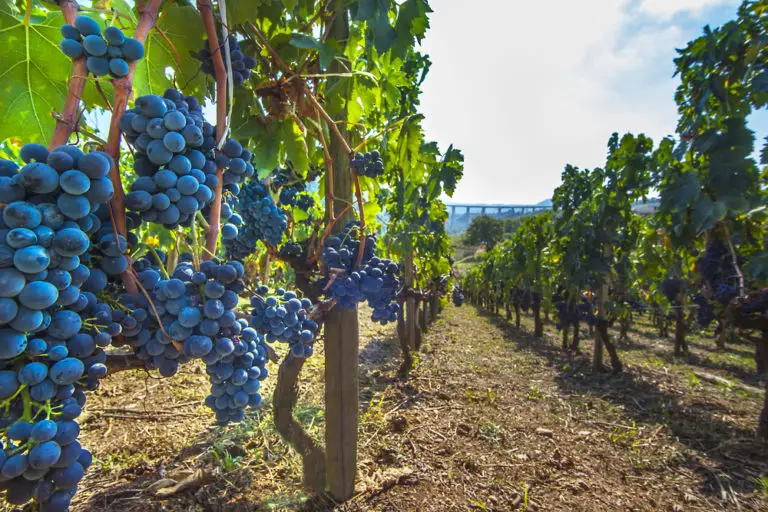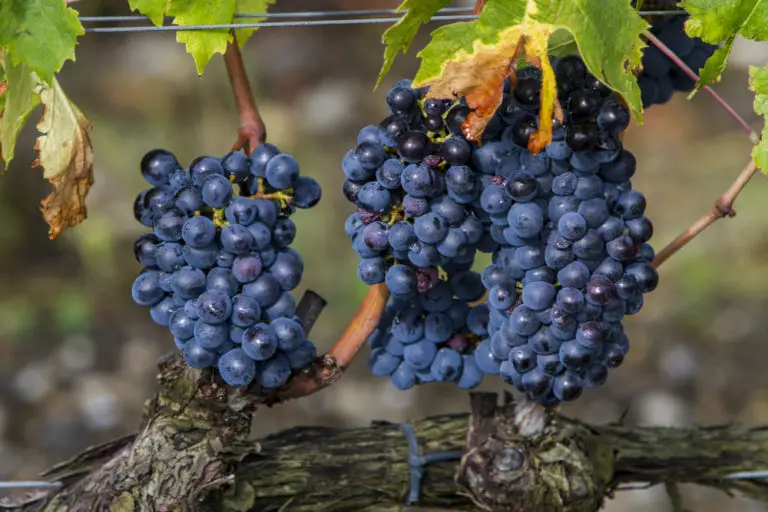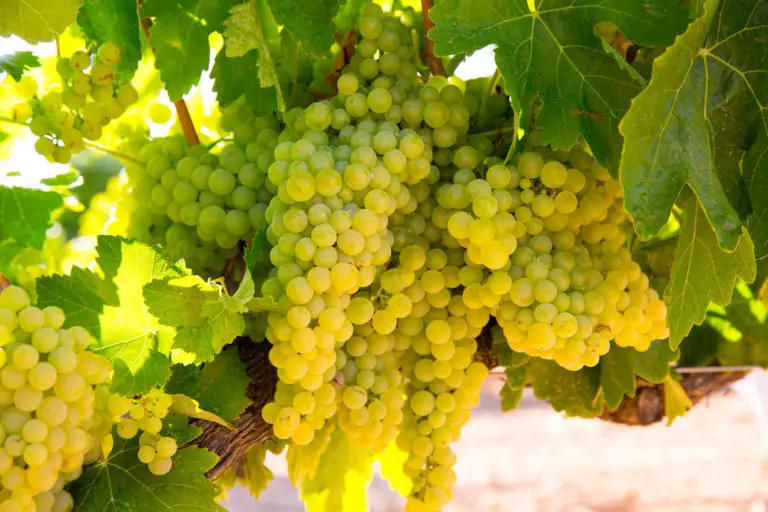Primitivo: The Beginners Guide (2024)
The name of the red grape has nothing to do with “Primitivo”, but refers to the early ripening of the variety. The main growing area is the Manduria region in Apulia in southern Italy, Puglia in Italian.
The addition of di Manduria is given to the DOC wines that mature here. Numerous grape varieties are grown on around 107,000 hectares, 80 percent of which are red and rosé wines.
- What is Primitivo?
- Known Regions for Primitivo
- Popular Blends of Primitivo
- How to Enjoy Primitivo?
- How is Primitivo Made?
- History of Primitivo
What is Primitivo?
Primitivo pronunciation is Pree-mee-tee-voh. It is a dark-skinned grape that is known for producing inky, tannic wines. It has an intense flavor and is deeply colored. It is both high in tannins and alcohol.
Primitivo ABV often reaches 18%, which is dulled to 14% in the table wines. Often, bitterness is found in this wine which is often combined with its mouth-puckering tannins. It also means that it needs a few years in either barrel or bottle.
Primitivo meaning “early one,” refers to the variety’s early-ripening nature. People often confuse it with less refined grapes as compared to other varieties.
But it is solely because of its name and does not mean the same. The robust character of Primitivo corrects this mistake, and therefore, even in Puglia, it is known as Mirr Test (‘hard wine’).
Primitivo vs. Zinfandel vs. Sangiovese
Primitivo vs Zinfandel is formed from the same variety of grapes, but the difference is their growing conditions. Both are grown in different weather, soil and have different winemaking processes.
In general, Primitivo varietals ripens under the hot Italian sun, giving a less sweet and fruity version of Zinfandel, while Zinfandel itself has high alcohol and sugar level content giving the wine a sweeter and smoother style. Although these wine names can not be used interchangeably, the winemakers often used Zinfandel on their Italian Primitivo wines when selling them in the US.
Primitivo vs Sangiovese are completely different from each other. While Sangiovese grapes adapt characteristics from their environments, they maintain commonalities across regions.
Primitivo grapes are light in color, have thin skins, fine tannins, and have long growing seasons. While they can grow in most places, they grow the best in dry, hot climates and limestone-like soils. They generally have a medium level of alcohol that typically ranges between 13-14% ABV.
Primitivo Characteristics
Primitivos is an Italian wine that has a moderate tannic and is full-bodied. It is meant to be consumed within three to four years of the harvest. Some of these wines are also sweet dessert wines, which are named dolce naturale. Sometimes, this wine is blended along with some other grape varieties from Italy. Since the discovery of Zinfandel, these wines have been more popular.
It is a hard wine, having a lighter color than both Merlot and Cabernet Sauvignon, but is darker than light-bodied wines like Pinot Noir. Primitivo alcohol content is 14 – 18 percent ABV, along with intense flavor, high acidity, and deep color. The texture of this wine is slightly oily but having a bigger and bolder structure.
Old wines are used to make higher quality wine. The palate of this wine is fruity, with a note of blackberry, strawberry, raisin, and cherry. It has a rustic, earthy flavor and is generally high in alcohol. Primitivo Characteristics are sometimes sweet but mainly semi-sweet or dry.
Primitivo Taste Profile
Primitivo red wine has a fruity flavor of citrus fruits and berries like black cherry, black currant, zesty cherry, blackberry, raspberry, apricot, cranberry jam, fig, raisin, black plum, and jammy/brambly fruit.
It also has typical earthy or floral flavors of licorice, smoke, star anise, black pepper, black cardamom, and clove. This wine is best enjoyed young, but sometimes, it is aged. An aged wine gives the flavors of fresh sawdust, peach yogurt, mocha, nutmeg, burnt sugar, cinnamon, coffee, coconut, vanilla, and tobacco.
Primitivo Ageability
The red grapes used to produce barrel-aged wine are the same as the non-barrel-aged Primitivo. It means that Primitivo (85-100%) is added to non-aromatic local grapes.
Primitivo di Manduria Riserva DOC is a ruby red wine with purple and shades of garnet highlights. As it ages, it gradually becomes orange-red. The aroma is complex and full and has a hint of plum, sometimes. The taste is characteristic, pleasant, and dry to full-bodied. It can also be slightly sweetish and become velvety as it ages.
Primitivo tastes best when it is 5-6 years old. The wine from some producers also improves after 10-15 years.
Italian Primitivo must undergo a period of aging of 2 years, in which it should be kept in a wooden barrel for at least nine months.
Known Regions for Primitivo
This wine is made majorly in the Puglia region of Italy. Some of the primary Primitivo regions are:
- The Hills of Gioia Del Colle– This is known as the birthplace of the Primitivo grape. The grapes here are fermented at high altitudes, making the tannins concentrated and more sunlight.
- Salento Peninsula– The wine made in Salento uses unique fermentation and vinification methods. This southern region of Puglia is a hot, dry region that reflects the customs and rich character of Lecce and Brindisi.
- The Red Soils of Taranto (Primitivo Di Manduria)– The most famous bottle of Primitivo Puglia wine comes from this region. The red soils of Taranto give a crispy and acidic character to the grapes making them great for export.
- Altopiano Delle Murge- It is a vast plateau covering a lot of the central Puglia region. The high altitudes here are similar to Gioia del Colle, which makes it ideal for producing highly concentrated Primitivo.
Popular Blends of Primitivo
Winemakers have made some interesting blends out of this Italian wine. Let us have a look at some of the most popular Primitivo blends:
- Piccini Memoro Rosso: This blend consists of 40% Primitivo from Puglia along with 10% Merlot from Veneto, Italy, 20% Nero d’Avola from Sicily and 30% Montepulciano from Abruzzo. All of these grape varieties are oaked for 12 months in casks before final blending takes place. It has a pleasant and inviting aroma of vanilla, figs, and dark fruits with a little spice and oak. It is a crowd-pleasing and unique blend that makes a great choice for people who love sweet red wines.
- Morella Negroamaro Primitivo: This is a blend of Negroamaro and Primitivo. It is a deeply colored variety that is only grown in the Puglia region. This wine is aged for ten months and kept in a bottle for a further duration of 8 months allowing the two varieties to integrate fully. The resulting wine is rich and smooth, having an intense red berry character, hints of dried herbs, and a very long finish.
How to Enjoy Primitivo?
Just like any other red wine, or perhaps, any wine. There are certain rules to enjoy every wine at its best. The same is the case with Primitivo. Let us have a look at ways to enjoy a glass of Primitivo at its best.
Food Pairings
Primitivo flavors are enhanced when you pair them with foods like Eggplant Parmesan, Pasta Puttanesca, Pizza Rustica, Lamb Curry, Grilled Vegetable Pasta, Hamburgers, and Spaghetti Bolognese. The medium acidity and high tannins make it food-friendly with earthy and hearty fare. Some Primitivo wine pairing is:
- Red Pasta with Grilled Vegetables- The acidity of this wine goes well with the tomato sauce of the red pasta. On the other side, the earthy flavors of spice, licorice, smoke, and dark chocolate combine well with the charred vegetables found in your pasta. Charred eggplant, fire-roasted red peppers, grilled zucchini, and caramelized onion make a good pair with the Primitivo profile.
- Pizza Rustica- The toppings of Rustica like onions, tomatoes, garlic, capers, and anchovies goes well with the Primitivo flavor profile. The wine holds the potent and savory flavors of anchovies, onions, and caper with ease and keeps the palate fresh. At the same time, the sweet tannins of Primitivo go along with the sweetness that the tomatoes and cheese impart.
- Hamburgers- There are several reasons that Hamburger and Primitivo wine make an excellent pair. Primarily, the balanced acidity and juicy flavor of the wine are refreshing against the meaty flavor of hamburgers. The sweet tannins of Primitivo bring out the best flavors in the beef protein. The proteins then help the wine by making it smooth, allowing deeper flavors of leather, smoke, spice, and earth in the wine to come out and play.
Temperature
Like any other full-bodied red wine, Puglia Primitivo red wine is served between 16 and 18 degrees Celsius (61–65 degrees Fahrenheit). Wine should be kept, at a place where the temperature does not fluctuate a lot as it can impact it. A temperature above 70 degrees will rapidly age the wine, which can negatively impact the taste. Such temperatures can also dry out the cork.
Stemware
Red wines are usually served in a bigger bowl glass than white wine. It allows the fuller and bolder flavors of red wines to “breathe”. A bigger bowl gives enough room to take in oxygen in the glass. It lets the wine open up and display both flavor and aromatic quality easily.
You will also find red glasses in tulip-shaped rims as it allows more air into the glass. Since Primitivo is a full-bodied wine, Bordeaux glasses are best as they are the largest.
The size of Bordeaux gives a large amount of space between the wine and the nose allowing you to experience the wine’s aromatic compounds. It also allows the wine to flow into the entire surface of your palate, resulting in a more comprehensive and robust tasting experience.
How is Primitivo Made?
The flavors and aroma of wines can differentiate based on the production methods. Since Primitivo is red wine, it requires no additional ingredients besides the primitivo grapes, yeast, and sulfur dioxide as a preservative. Following is the step to step Primitivo winemaking process:
Red wine is made on the skins
The only difference between red wine and white wine is that red wine is fermented with their skin, and the juice is combined in a vat or tank. White wine, on the other side, is pressed before fermentation, and skins are separated from the grapes.
Harvesting red-wine grapes
These grapes are generally ripe between late summers to early fall. The grapes are cut from the Primitivo vineyard and separated from vines in the form of clusters or branches. It is either done by self-propelled machines or by hand. Then the grapes are delivered to a winery, where the unwanted raisins, debris, leaves, and mildewed grapes are removed.
Crushing
Once the removal process is completed, clusters are then sent to a crusher/destemmer that removes the berries from the stems and squeezes them a little to get the juice flowing. Sometimes, winemakers add a dose of sulfur dioxide to minimize oxidation and kill unwanted microbes.
Red wines typically mature in oak barrels
Most wines are allowed to age before bottling. This process takes a few months to a few years in a big tank. For high-quality, traditional-style red wines, oak barrels and vats are preferred. During this process, the red wine is clarified by racking, fining, and filtering.
Tiny bits of grape skins and sediments like dead yeast cells settle out while the wine ages. They form a mucky layer on the bottom of tanks and barrels. Sometimes, winemakers adjust the wine that appears hazy or too tannic by utilizing the binding ability of isinglass, bentonite clay, or egg whites.
Filtration
Once the fermentation process is completed, the wines are filtered and extra sediments are removed. Sterile filtration is done to remove any remaining yeast and microbes that may spoil the wine at a later time.
Bottling
Once the wine is filtered, the wine is filled in an empty bottle, corked, and labeled. The wine is now ready for sale.
History of Primitivo
In the era of the 1700s, primitive was brought from Croatia to Southern Italy via the Adriatic Sea. They were known as the tribidrag or crljenak kaštelanski in Croatia and were renamed by an Italian monk as Primitivo.
During the 19th and 20th centuries, it was mainly used for blending to make other Italian wines strong. In the 1990s, the European government offered financial incentives to growers in Italy, especially in the south, to decrease the volume of low-quality wine. Growers were happy to give up Primitivo bush vines as it did not produce much income and was hard to harvest.
In the late 1990s, DNA analysis from UC Davis in California proved that these grapes were identical to the California zinfandel grape. Italian producers were then allowed to legally label their Primitivo wines like Zinfandel. It led to a popularity gain in the export market, and the plantings have increased by about 50% since then, this created a memorable primitive history.
FAQ
What is Primitivo wine?
Also known as Zinfandel, Primitivo wine color is red, and it is the third-most planted grape in Puglia, in southern Italy.
Is Zinfandel and Primitivo the same?
The grape types of Primitivo and Zinfandel are the same. Primitivo ingredients are mostly grown in Italy while Zinfandel is grown in California.
What is a Primitivo wine like?
Primitivo taste is similar to blueberry and blackberry – as well as licorice and black pepper. Its flavors are pronounced and are often reminiscent of very ripe dark berries
What does Primitivo pair well with?
The best way to drink Primitivo is to pair it with Eggplant Parmesan, Hamburgers, Pasta Puttanesca, Pizza Rustica, Grilled Vegetable Pasta, Spaghetti Bolognese, and Lamb Curry.
Is Primitivo dry or sweet?
Primitivo is a red wine grape variety that is grown in Puglia, Italy. The primitive profile can range between dry, semi-dry, and sweet dry.
How long can you age Primitivo?
Primitivo should be consumed after 5-6 years when it is at its best. From certain producers, it improves after 10-15 years.
What does the name Primitivo mean?
The Primitivo name was given by an Italian monk, as he noticed that the grapes were taking more time to ripen as compared to other varieties. The literal translation is “early one”.
What is Primitivo generally called in the US?
Primitivo is known as Zinfandel in the US. The Primitivo color is red, and it is loved for its jammy fruit and smoky, exotic spice notes.
How long should Primitivo breathe?
You should always serve your glass before drinking Primitivo and let it breathe. Tannic reds can benefit from some aggressive swirling and remaining for 10–20 minutes in the glass.

